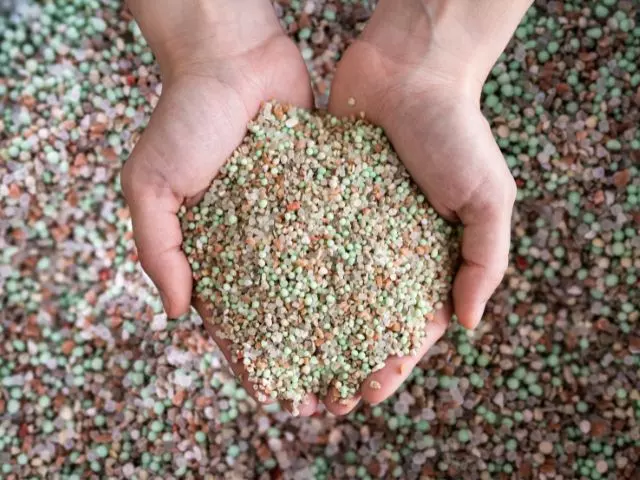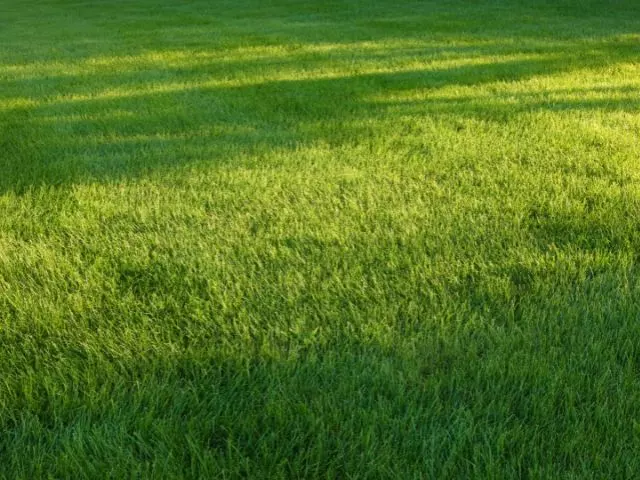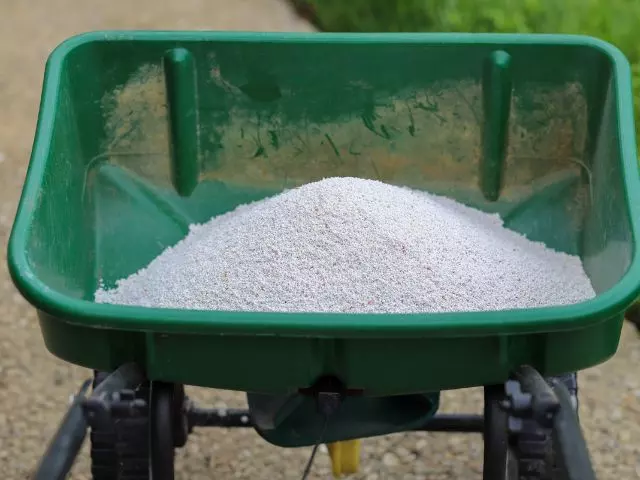Utilizing a winter fertilizer is a crucial step in lawn maintenance that guarantees the survival of your grass during frosty weather conditions and prepares it to thrive as soon as spring arrives. Continue reading to learn all about winterizer fertilizer.
Table of Contents
What Is Winterizer Fertilizer?
Winterizer fertilizer is a type of fertilizer specially designed for use during the late autumn or early winter months. It is formulated to provide essential nutrients to lawns and plants, promoting root development and enhancing their ability to withstand the dormant wintertime.
Winterizer fertilizers typically contain higher levels of potassium and nitrogen compared to other fertilizers, which helps to strengthen plants’ resistance to cold temperatures, diseases, and stress.
By applying winterizer fertilizer before the winter season, you can support the health and resilience of your lawn, ensuring they have stored nutrients to fuel its growth when spring arrives.
Winterizer Fertilizer Numbers
The letters NPK represent the nomenclature of the three most essential chemical elements for plant and lawn nutrition. N refers to nitrogen, P to phosphorus, and K to potassium. These letters on the label mark the composition of each commercial fertilizer and are accompanied by 3 numbers indicating, in the same order, the concentration in % of each corresponding element.
For example, if the label of the winter fertilizer says 21-0-20, it means that the fertilizer has 20% nitrogen, 0% phosphorus, and 20% potassium. The remaining percentage of the fertilizer will be other nutrients and minerals that are also used by the lawn and plants.
The first of the NPK elements is Nitrogen (N). This element exists naturally in the air, but the lawn is not able to obtain it by this means. When the lawn has the correct % of nitrogen available, it will be bright green.
Phosphorus (P) is the second element represented in the NPK formula indicated in fertilizers. It is a critical element in the growth and establishment of newly planted grass. That is why phosphorus-free or low-phosphorus winterizer fertilizers are used.
The letter K in the NPK formula indicates the potassium concentration in the fertilizer. Unlike nitrogen and phosphorus, potassium is not used directly in constructing new cell structures. Instead, the plant stores potassium in the central space of each cell, known as the vacuole. A high potassium concentration in the vacuole means the cell can absorb and retain water much better. The primary function of potassium is to regulate the water balance of the entire plant.

When To Apply Winterizer Fertilizer?
The ideal time to apply winterizer fertilizer is typically in late autumn or early winter before the ground freezes and the grass goes dormant. The specific timing may vary depending on your region and climate conditions. However, a general guideline is to apply winterizer fertilizer when the grass has stopped actively growing, but the soil temperature is still above freezing.
Applying the winterizer fertilizer during this period allows the grass and plants to absorb and store the nutrients before the winter months, providing them with the necessary resources to survive the dormant period and promote healthy growth in the spring. It helps strengthen the root system, improve cold tolerance, and enhance overall resilience against winter stressors.
It’s essential to follow the instructions provided on the fertilizer packaging and consider factors such as local climate patterns, grass type, and regional recommendations. Continue reading to learn about the best winterizer fertilizers for lawns.

Best Winterizer Fertilizer
Two essential components of a high-quality winterizer fertilizer are nitrogen (N) and potassium (K). Nitrogen helps rebuild its carbs to ensure your grass has enough fuel to last through the chilly winter and spring months.
Although these help the grass survive cold-weather stresses like stress and mildew, potassium also gives your lawn nutrition.
According to John Fech of the University of Nebraska, a good winter lawn fertilizer would be 21-0-20 or 19-2-13. Last fall, I used an NPK 24-0-14 fertilizer for my lawn and had excellent results that were seen in the spring.
Applying a winterizer fertilizer will supply a balanced or increased amount of potassium in addition to nitrogen. Extensive research conducted at reputable universities has demonstrated that potassium is vital in enhancing the turf’s ability to endure stressful conditions. During winter, stress arises from cold winds and low temperatures, which result in parched crowns and sparse turf growth. Similarly, summer brings its own stressors, such as excessive heat and root system dehydration.
By incorporating winterizer fertilizer, you effectively fortify your lawn against these stressors. Emphasizing its importance, if you can only fertilize your lawn once a year, it is crucial to do so in early November. Your lawn will express gratitude, and you will be delighted by its rejuvenated appearance come springtime.
- Prepare your lawn for winter with The Andersons Fall Lawn Food 24-0-14 - Application 4 of The Andersons Lawn Program
- Contains potassium for hardiness and vigor
- Includes quick- intermediate- and slow-release nitrogen for a fast green up and extended feeding
How to Apply Winterizer Fertilizer
Applying winter fertilizer correctly to the lawn is very important so that the lawn can take advantage of the nutrients correctly.
Apply winterizer fertilizer when the grass has ceased active growth, usually in late autumn or early winter before the ground freezes. Aim for a time when the soil temperature is still above freezing.
Before applying the fertilizer, mow your lawn at a slightly lower height than usual. That helps ensure better fertilizer contact with the soil and allows for even distribution.
Read the instructions on the fertilizer packaging to determine the recommended application rate based on your lawn’s size and the specific fertilizer being used. Measure your lawn’s area to determine the amount of fertilizer needed.
Use a broadcast or handheld spreader to distribute the winterizer fertilizer evenly across the lawn. Start along the edges and then move back and forth systematically to cover the entire area. Overlap slightly to avoid missed spots.
After applying the winterizer fertilizer, lightly water the lawn. That helps the fertilizer penetrate the soil and reach the root zone. However, avoid excessive watering that leads to runoff.

- Use the Scotts Turf Builder EdgeGuard Mini Broadcast Spreader to apply Scotts lawn care products
- Comes pre-calibrated and fully assembled with a fold-down handle for easy storage
- Scotts exclusive EdgeGuard Technology keeps lawn product off landscaping, driveways, and sidewalks
Final Conclusions
In conclusion, winterizer fertilizer is a specialized type of fertilizer designed to support the health and resilience of lawns during the dormant winter period. Applying winterizer fertilizer before the onset of freezing temperatures can provide essential nutrients, particularly potassium, that help strengthen plants’ resistance to cold, diseases, and stress.
If you are passionate about the lawn, I recommend you read our lawn care and maintenance articles, which will significantly help.



